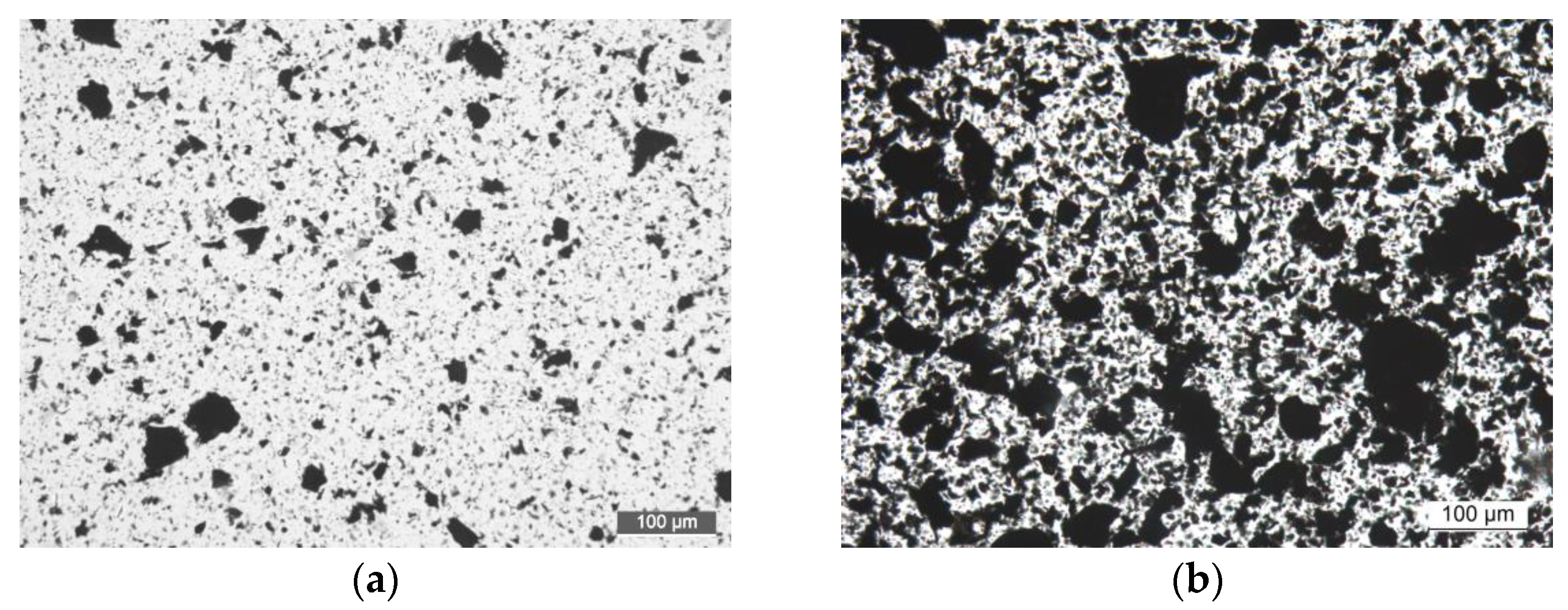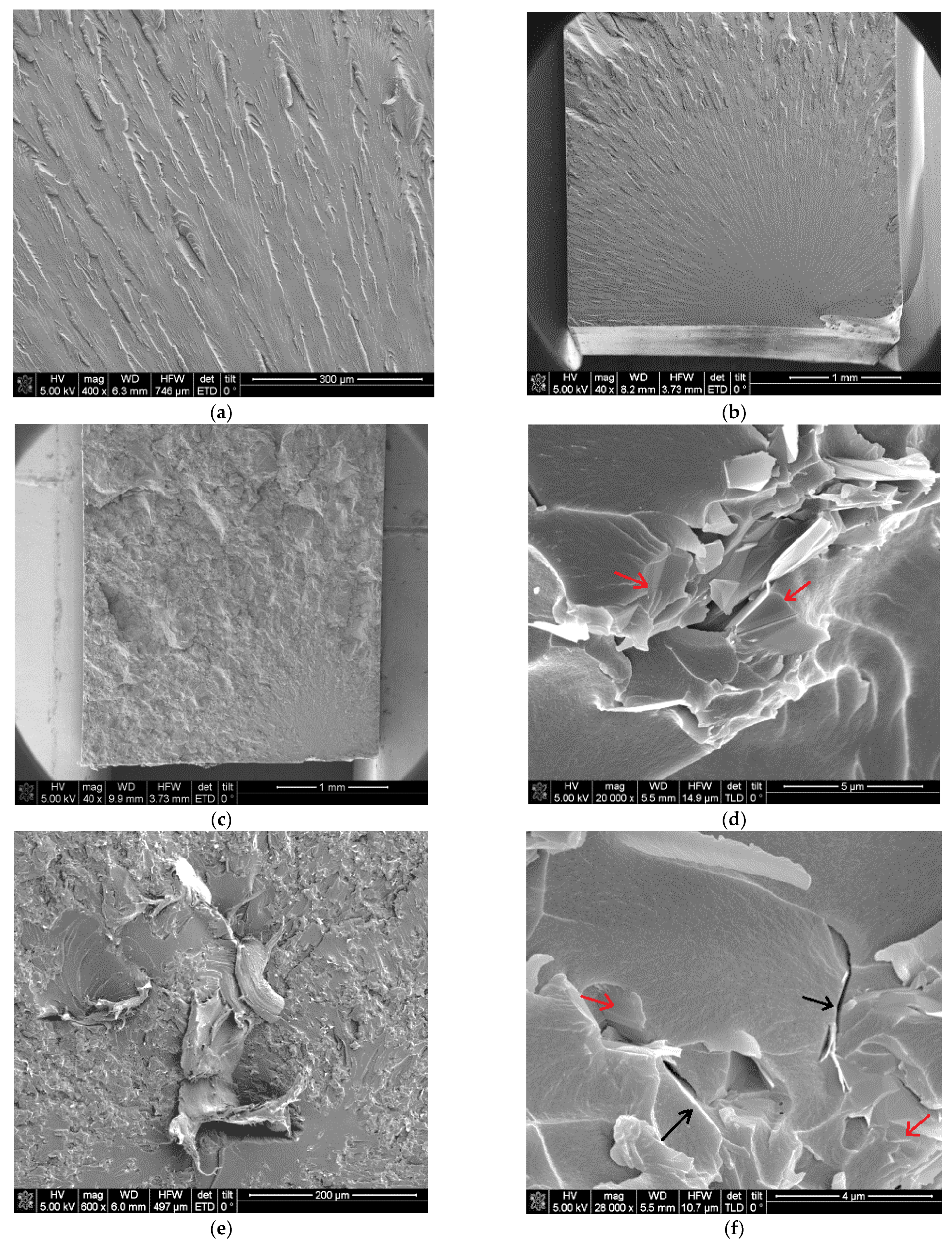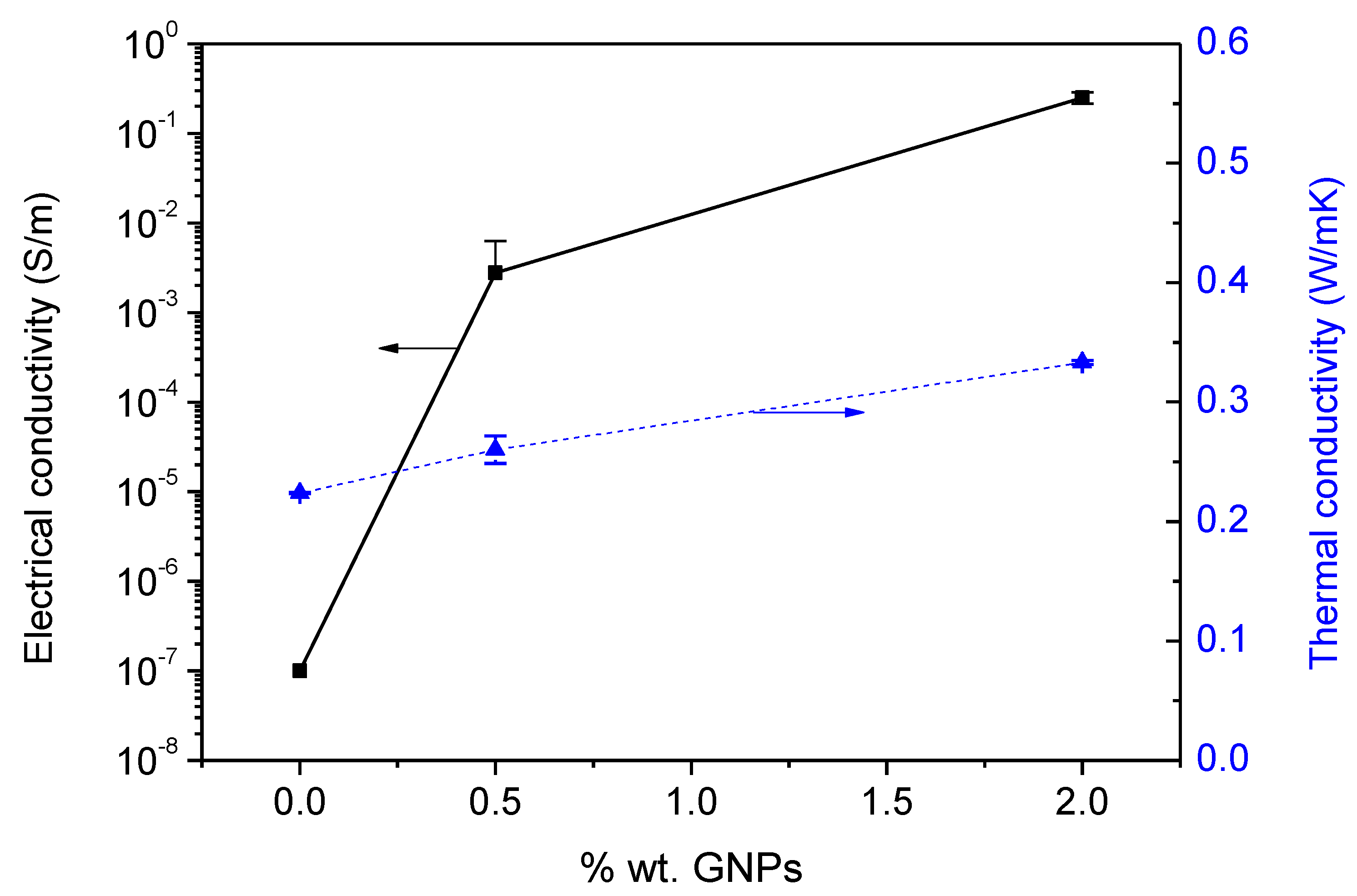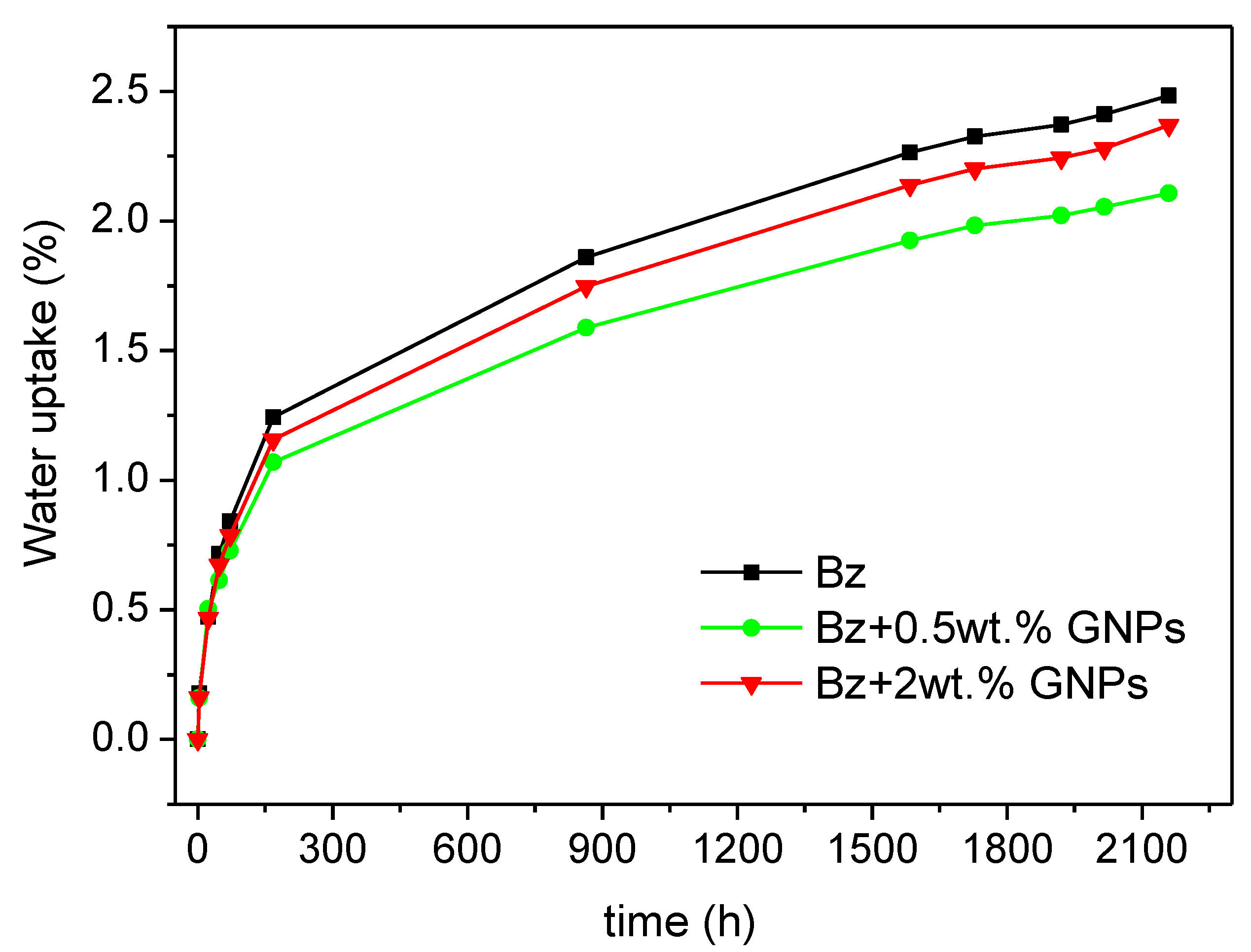Enhancing an Aerospace Grade Benzoxazine Resin by Means of Graphene Nanoplatelets Addition
Abstract
:1. Introduction
2. Experimental
2.1. Materials
2.2. Methods
2.2.1. Preparation of Nanocomposites
2.2.2. Measurements
3. Results and Discussion
3.1. Characterization of GPNs
3.2. Dispersion Degree of GNPs in Benzoxazine Resin
3.3. Effect of GNPs Loading in Nanocomposites Mechanical, Physical and Thermal Properties
3.4. Summary of Results
4. Conclusions
Author Contributions
Funding
Institutional Review Board Statement
Informed Consent Statement
Acknowledgments
Conflicts of Interest
References
- Sawaryn, C.; Kreiling, S.; Schönfeld, R.; Landfester, K.; Taden, A. Handbook of Benzoxazine Resins; Elsevier: Cleveland, OH, USA, 2011; Chapter 35; p. 605. [Google Scholar]
- Liu, C.; Sun, M.; Zhang, B.; Zhang, X.; Li, J.; Wang, L.; Xue, G.; Zhao, M.; Song, C.; Li, Q. Preparation and properties of acetylene-terminated benzoxazine/epoxy copolymers. React. Funct. Polym. 2017, 120, 98–103. [Google Scholar] [CrossRef]
- Yagci, Y.; Kiskan, B.; Ghosh, N.N. Recent advancement on polybenzoxazine—A newly developed high performance thermoset. J. Polym. Sci. A Polym. Chem. 2009, 47, 5565–5576. [Google Scholar] [CrossRef]
- Ishida, H. Handbook of Benzoxazine Resins; Elsevier: Cleveland, OH, USA, 2011; Chapter 1; p. 3. [Google Scholar]
- Kaleemullah, M.; Khan, S.U.; Kim, J.-K. Effect of surfactant treatment on thermal stability and mechanical properties of CNT/polybenzoxazine nanocomposites. Compos. Sci. Technol. 2012, 72, 1968–1976. [Google Scholar] [CrossRef]
- Yang, L.; Zhang, C.; Pilla, S.; Gong, S. Polybenzoxazine-core shell rubber-carbon nanotube nanocomposites. Compos. Part A Appl. Sci. Manuf. 2008, 39, 1653–1659. [Google Scholar] [CrossRef]
- Wang, Y.-H.; Chang, C.-M.; Liu, Y.-L. Benzoxazine-functionalized multi-walled carbon nanotubes for preparation of electrically-conductive polybenzoxazines. Polymer 2012, 53, 106–112. [Google Scholar] [CrossRef]
- Zeng, M.; Wang, J.; Li, R.; Liu, J.; Chen, W.; Xu, Q.; Gu, Y. The curing behavior and thermal property of graphene oxide/benzoxazine nanocomposites. Polymer 2013, 54, 3107–3116. [Google Scholar] [CrossRef]
- Alhassan, S.M.; Qutubuddin, S.; Schiraldi, D.A.; Agag, T.; Ishida, H. Preparation and thermal properties of graphene oxide/main chain benzoxazine polymer. Eur. Polym. J. 2013, 49, 3825–3833. [Google Scholar] [CrossRef]
- Zhang, W.; Zhan, Y.; Gao, X.; Li, R.; Zhu, W.; Xu, H.; Liu, B.; Fang, X.; Xu, Y.; Ding, T. Effect of oxygen functionalities of graphene oxide on polymerization and thermal properties of reactive benzoxazine nanocomposites. Macromol. Res. 2018, 26, 77–84. [Google Scholar] [CrossRef]
- Hou, W.; Gao, Y.; Wang, J.; Blackwood, D.J.; Teo, S. Recent advances and future perspectives for graphene oxide reinforced epoxy resins. Mater. Today Commun. 2020, 23, 100883. [Google Scholar] [CrossRef]
- Biru, E.I.; Gârea, S.A.; Iovu, H. Developing polybenzoxazine composites based on various carbon structures. Macromol. Chem. Phys. 2019, 220, 1800322. [Google Scholar] [CrossRef]
- Monti, M.; Rallini, M.; Puglia, D.; Peponi, L.; Torre, L.; Kenny, J.M. Morphology and electrical properties of graphene–epoxy nanocomposites obtained by different solvent assisted processing methods. Compos. Part Appl. Sci. Manuf. 2013, 46, 166–172. [Google Scholar] [CrossRef]
- Prolongo, S.G.; Moriche, R.; Jiménez-Suárez, A.; Sánchez, M.; Ureña, A. Advantages and disadvantages of the addition of graphene nanoplatelets to epoxy resins. Eur. Polym. J. 2014, 61, 206–214. [Google Scholar] [CrossRef]
- García-Martínez, V.; Gude, M.R.; Calvo, S.; Martínez-Miranda, M.R.; Ureña, A. Influence of graphene nanoplatelets on curing kinetics and rheological properties of a benzoxazine resin. Mater. Today Commun. 2020, 24, 100990. [Google Scholar] [CrossRef]
- Moriche, R.; Prolongo, S.G.; Sánchez, M.; Jimenez-Suárez, A.; Sayagués, M.J.; Ureña, A. Morphological changes on graphene nanoplatelets induced during dispersion into an epoxy resin by different methods. Compos. B. Eng. 2015, 72, 199–205. [Google Scholar] [CrossRef]
- Bertaut, E.F. Debye-Scherrer lines and distribution of the dimensions of the Bragg domains in polycrystalline powders. Acta Cryst. 1950, 3, 14–18. [Google Scholar] [CrossRef]
- Saikia, B.K.; Boruah, R.K.; Gogoi, P.K. A X-ray diffraction analysis on graphene layers of Assam coal. J. Chem. Sci. 2009, 121, 103–106. [Google Scholar] [CrossRef]
- Ferrari, A.C. Raman spectroscopy of graphene and graphite: Disorder, electron–phonon coupling, doping and nonadiabatic effects. Solid State Commun. 2007, 143, 47–57. [Google Scholar] [CrossRef]
- Chiu, F.C.; Chen, Y.-J. Evaluation of thermal, mechanical, and electrical properties of PVDF/GNP binary and PVDF/PMMA/GNP ternary nanocomposites. Compos. Part Appl. Sci. Manuf. 2015, 68, 62–71. [Google Scholar] [CrossRef]
- Teng, C.-C.; Ma, C.-C.M.; Lu, C.-H.; Yang, S.-Y.; Lee, S.-H.; Hsiao, M.-C.; Yen, M.-Y.; Chiou, K.-C.; Lee, T.-M. Thermal conductivity and structure of non-covalent functionalized graphene/epoxy composites. Carbon 2011, 49, 5107–5116. [Google Scholar] [CrossRef]
- Sato, K.; Saito, R.; Oyama, Y.; Jiang, J.; Cancado, L.G.; Pimenta, M.A. D-band Raman intensity of graphitic materials as a function of laser energy and crystallite size. Chem. Phys. Lett. 2006, 427, 117–121. [Google Scholar] [CrossRef]
- Tang, L.-C.; Wan, Y.-J.; Yan, D.; Pei, Y.-B.; Zhao, L.; Li, Y.-B.; Wu, L.-B.; Jiang, J.-X.; Lai, G.-Q. The effect of graphene dispersion on the mechanical properties of graphene/epoxy composites. Carbon 2013, 60, 16–27. [Google Scholar] [CrossRef]
- Liu, W.-W.; Xia, B.-Y.; Wang, X.-X.; Wang, J.-N. Exfoliation and dispersion of graphene in ethanol-water mixtures. Front. Mater. Sci. 2012, 6, 176–182. [Google Scholar] [CrossRef]
- Yue, L.; Pircheraghi, G.; Monemian, S.A.; Manas-Zloczower, I. Epoxy composites with carbon nanotubes and graphene nanoplatelets—Dispersion and synergy effects. Carbon 2014, 78, 268–278. [Google Scholar] [CrossRef]
- Prolongo, S.G.; Jimenez-Suarez, A.; Moriche, R.; Ureña, A. In situ processing of epoxy composites reinforced with graphene nanoplatelets. Compos. Sci. Technol. 2013, 86, 185–191. [Google Scholar] [CrossRef]
- Alexopoulos, N.K.; Paragkamian, Z.; Poulin, P.; Kourloulis, S.K. Fracture related mechanical properties for low and high graphene reinforcement of epoxy nanocomposites. Compos. Sci. Technol. 2017, 150, 194–204. [Google Scholar] [CrossRef]
- Liu, J.; Agag, T.; Ishida, H. Handbook of Benzoxazine Resins; Elsevier: Cleveland, OH, USA, 2011; Chapter 18; p. 356. [Google Scholar]
- Ho, K.; Hsiao, M.; Chou, T.; Ma, C.; Xie, X.; Chiang, J.; Yang, S.; Chang, L. Preparation and characterization of covalenty functionalized graphene using vinyl-terminated benzoxazine monomer and associated nanocomposites with low coefficient of thermal expansion. Polym. Int. 2013, 62, 966–973. [Google Scholar] [CrossRef]
- Xu, P.; Cong, P.; Gao, Z.; Du, M.; Wang, Z.; Su, X.; Zhao, X. High performance graphene oxide-modified polybenzoxazine resin. Polym. Compos. 2016, 37, 1507–1514. [Google Scholar] [CrossRef]
- Starkova, O.; Chandrasekaran, S.; Prado, L.A.S.A.; Tölle, F.; Mülhaupt, R.; Schulte, K. Hydrothermally resistant thermally reduced graphene oxide and multi-wall carbon nanotube based epoxy nanocomposites. Polym. Degrad. Stab. 2013, 98, 519–526. [Google Scholar] [CrossRef]
- Schlesing, W.; Buhk, M.; Osterhold, M. Dynamic mechanical analysis in coatings industry. Prog. Org. Coat. 2004, 49, 197–208. [Google Scholar] [CrossRef]
- Liao, K.-H.; Aoyama, S.; Abdala, A.A.; Macosko, C. Does Graphene Change Tg of Nanocomposites? Macromolecules 2014, 47, 8311–8319. [Google Scholar] [CrossRef]
- Wajid, A.S.; Ahmed, H.S.T.; Das, S.; Irin, F.; Jankowski, A.F.; Green, M.J. High-Performance Pristine Graphene/Epoxy Composites With Enhanced Mechanical and Electrical Properties. Macromol. Mater. Eng. 2013, 298, 339–347. [Google Scholar] [CrossRef]
- Allaoui, A.; El Bounia, N. How carbon nanotubes affect the cure kinetics and glass transition temperature of their epoxy composite? Express Polym. Lett. 2009, 3, 588–594. [Google Scholar] [CrossRef]
- Zúñiga, C.; Bonnaud, L.; Lligadas, G.; Ronda, J.C.; Galià, M.; Cádiz, V.; Dubois, P. Convenient and solventless preparation of pure carbon nanotube/polybenzoxazine nanocomposites with low percolation threshold and improved thermal and fire properties. J. Mater. Chem. A 2014, 2, 6814. [Google Scholar] [CrossRef]
- Hashemi, R.; Weng, G.J. A theoretical treatment of graphene nanocomposites with percolation threshold, tunneling-assisted conductivity and microcapacitor effect in AC and DC electrical settings. Carbon 2016, 96, 474–490. [Google Scholar] [CrossRef]
- Gu, H.; Ma, C.; Gu, J.; Guo, J.; Yan, X.; Huang, J.; Qiuyu, Z.; Zhanhu, G. An overview of multifunctional epoxy nanocomposites. J. Mater. Chem. C 2016, 4, 5890–5906. [Google Scholar] [CrossRef]
- Zhang, S.; Yin, S.; Ran, Q.; Fu, Q.; Gu, Y. Facile preparation of polybenzoxazine/graphene nanocomposites for electromagnetic interference shielding. Polymer 2019, 162, 20–28. [Google Scholar] [CrossRef]
- Chandrasekaran, S.; Seidel, C.; Schulte, K. Preparation and characterization of graphite nano-platelet (GNP)/epoxy nano-composite: Mechanical, electrical and thermal properties. Eur. Polym. J. 2013, 49, 3878–3888. [Google Scholar] [CrossRef]
- Chandrasekaran, S.; Faiella, G.; Prado, L.; Tölle, F.; Mülhaupt, R.; Schulte, K. Thermally reduced graphene oxide acting as a trap for multiwall carbon nanotuves in bi-filler epoxy composites. Compos. Part A Appl. Sci. Manuf. 2013, 49, 51–57. [Google Scholar] [CrossRef]
- Wang, F.; Drzal, L.T.; Quin, Y.; Huang, Z. Mechanical properties and thermal conductivity of graphene nanoplatelets/epoxy composites. J. Mater. Sci. 2015, 50, 1082–1093. [Google Scholar] [CrossRef]
- Olowojoba, G.B.; Eslava, S.; Gutierrez, E.S.; Kinloch, A.J.; Mattevi, C.; Rocha, V.G.; Taylor, A.C. In situ thermally reduced graphene oxide/epoxy composites: Thermal and mechanical properties. Appl. Nanosci. 2016, 6, 1015–1022. [Google Scholar] [CrossRef]
- Phuangngamphan, M.; Okhawilai, M.; Hiziroglu, S.; Rimdusit, S. Development of highly conductive graphite-/graphene-filled polybenzoxazine composite for bipolar plates in fuel cells. Appl. Polym. Sci. 2019, 136, 47183. [Google Scholar] [CrossRef]
- Malekpour, H.; Chang, K.-H.; Chen, J.-C.; Lu, C.-Y.; Nika, D.L.; Novoselov, K.S.; Balandin, A.A. Thermal Conductivity of Graphene Laminate. Nano Lett. 2014, 14, 5155–5161. [Google Scholar] [CrossRef] [PubMed]
- Chatterjee, S.; Nafezarefi, F.; Tai, N.H.; Schlagenhauf, L.; Nüesch, F.A.; Chu, B.T.T. Size and synergy effects of nanofiller hybrids including graphene nanoplatelets and carbon nanotubes in mechanical properties of epoxy composites. Carbon 2012, 50, 5380–5386. [Google Scholar] [CrossRef]
- Kim, H.S.; Bae, H.S.; Yu, J.; Kim, S.Y. Thermal conductivity of polymer composites with the geometrical characteristics of graphene nanoplatelets. Sci. Rep. 2016, 6, 26825. [Google Scholar] [CrossRef] [Green Version]
- Colonna, S.; Monticelli, O.; Gomez, J.; Novara, C.; Saracco, G.; Fina, A. Effect of morphology and defectiveness of graphene-related materials on the electrical and thermal conductivity of their polymer nanocomposites. Polymer 2016, 102, 292–300. [Google Scholar] [CrossRef] [Green Version]
- Choudalakis, G.; Gotsis, A.D. Free volume and mass transport in polymer nanocomposites. Curr. Opin. Colloid. Interface Sci. 2012, 17, 132–140. [Google Scholar] [CrossRef]
- Ishida, H.; Allen, D.J. Gelation behavior of near-zero shrinkage polybenzoxazines. J. Appl. Polym. Sci. 2001, 79, 406–417. [Google Scholar] [CrossRef]
- Naveen, J.; Jawaid, M.; Zainudin, E.S.; Thariq Hameed Sultan, M.; Yahaya, R. Improved Mechanical and Moisture-Resistant Properties of Woven Hybrid Epoxy Composites by Graphene Nanoplatelets (GNP). Materials 2019, 12, 1249. [Google Scholar] [CrossRef] [Green Version]












| Sample | Strenght (MPa) | E’ (GPa) | Strain at Break (%) |
|---|---|---|---|
| Neat benzoxazine | 46.3 ± 10.3 | 4.5 ± 0.2 | 0.97 ± 0.25 |
| 0.5 wt.% GNPs | 64.2 ± 20.3 | 4.4 ± 0.2 | 1.31 ± 0.39 |
| 2 wt.% GNPs | 57.1 ± 7.8 | 4.6 ± 0.1 | 1.22 ± 0.01 |
| Sample | E’50 °C (GPa) | E’260 °C (MPa) | Tg (°C) |
|---|---|---|---|
| Neat Bz | 4.0 ± 0.2 | 71.5 ± 1.9 | 233.6 ± 1.1 |
| 0.5 wt.% GNPs | 3.9 ± 0.1 | 77.9 ± 2.2 | 229.7 ± 0.1 |
| 2 wt.% GNPs | 4.1 ± 0.1 | 72.1 ± 3.4 | 228.0 ± 0.8 |
| % wt. GNPs | Tensile Strength | Tensile Modulus | Tg | Electrical Conductivity | Thermal Conductivity | Water Uptake |
|---|---|---|---|---|---|---|
| 0.5 | ↑40% | ↓ 2.4% | ↓ 3.9 °C | ↑ 4 orders of magnitude | ↑ 16% | ↓ 15% |
| 2 | ↑ 24% | ↑ 2.0% | ↓ 5.6 °C | ↑ 6 orders of magnitude | ↑ 49% | ↓ 6% |
Publisher’s Note: MDPI stays neutral with regard to jurisdictional claims in published maps and institutional affiliations. |
© 2021 by the authors. Licensee MDPI, Basel, Switzerland. This article is an open access article distributed under the terms and conditions of the Creative Commons Attribution (CC BY) license (https://creativecommons.org/licenses/by/4.0/).
Share and Cite
García-Martínez, V.; Gude, M.R.; Calvo, S.; Ureña, A. Enhancing an Aerospace Grade Benzoxazine Resin by Means of Graphene Nanoplatelets Addition. Polymers 2021, 13, 2544. https://doi.org/10.3390/polym13152544
García-Martínez V, Gude MR, Calvo S, Ureña A. Enhancing an Aerospace Grade Benzoxazine Resin by Means of Graphene Nanoplatelets Addition. Polymers. 2021; 13(15):2544. https://doi.org/10.3390/polym13152544
Chicago/Turabian StyleGarcía-Martínez, Vanessa, Maria R. Gude, Silvia Calvo, and Alejandro Ureña. 2021. "Enhancing an Aerospace Grade Benzoxazine Resin by Means of Graphene Nanoplatelets Addition" Polymers 13, no. 15: 2544. https://doi.org/10.3390/polym13152544
APA StyleGarcía-Martínez, V., Gude, M. R., Calvo, S., & Ureña, A. (2021). Enhancing an Aerospace Grade Benzoxazine Resin by Means of Graphene Nanoplatelets Addition. Polymers, 13(15), 2544. https://doi.org/10.3390/polym13152544







